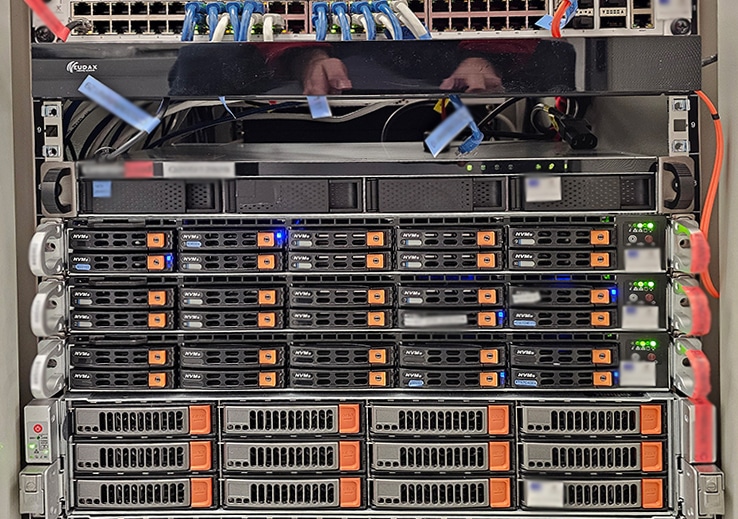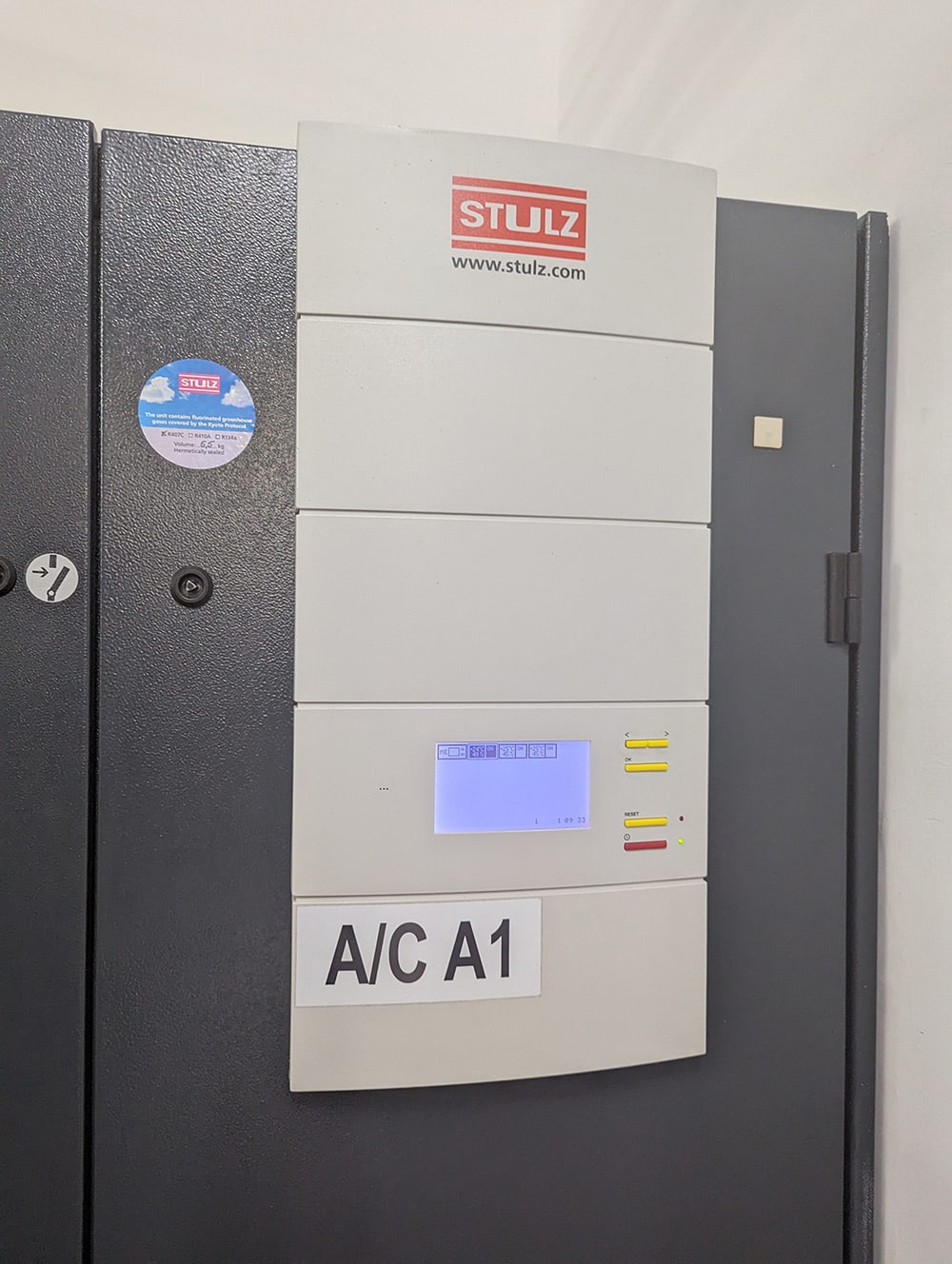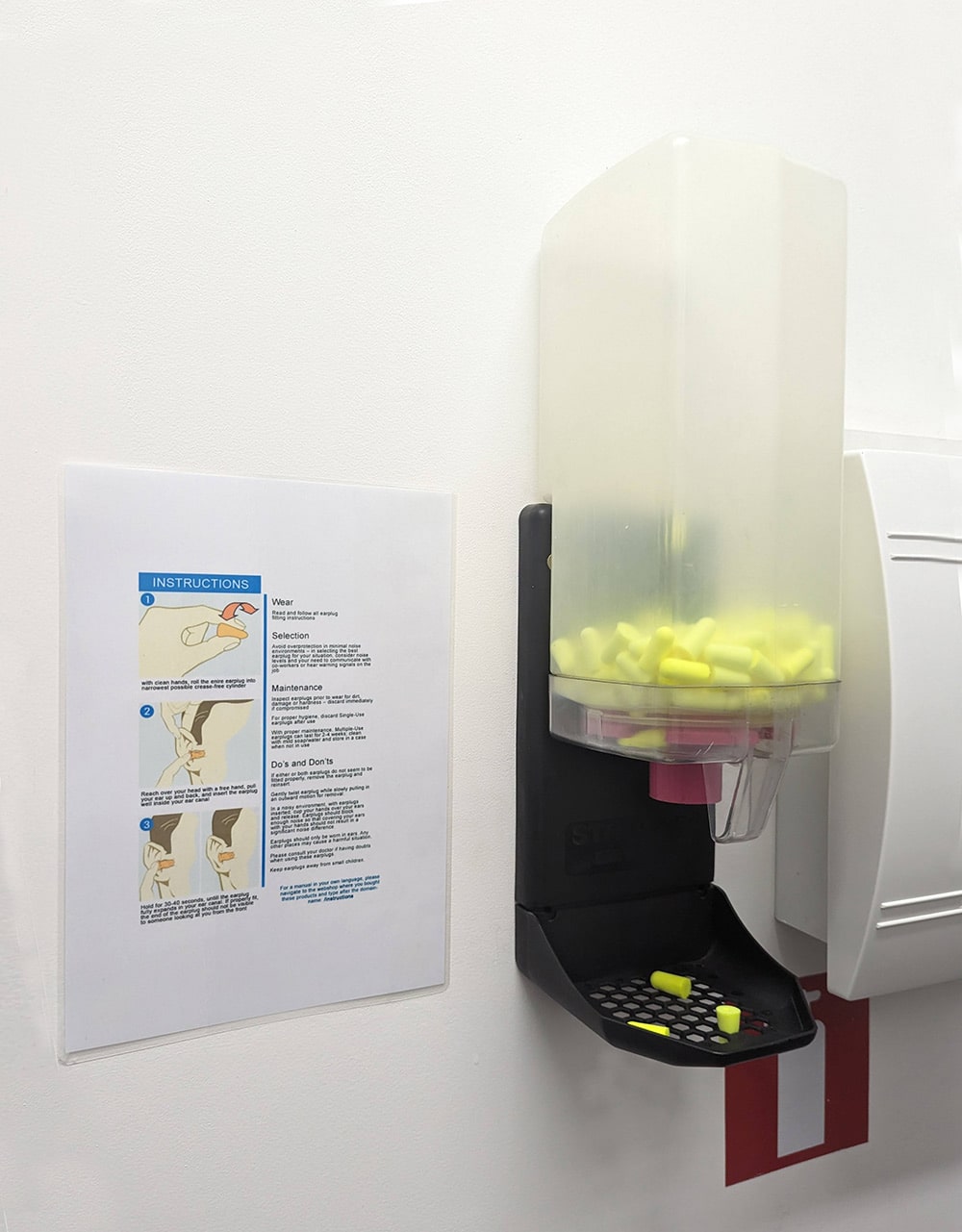Location
Sofia, BulgariaMontana, Bulgaria
Key Partners
Lead: CERTHCIRCEURBEZAVIOMIEWVT
Main Solutions
TIER III, PCI-DSS compliantElectricity is secured with 2N+1 redundant UPSes2N+1 Redundant Diesel Generatorstwo 20kV connections to the grid

.
.
.
.
Description
Data Center A: Energy Consumption for ABILIX servers only – 35 MWh/y. Around 10 GWh/y for the whole DataCenter. Evenly distributed with no Seasonal peaks for servers. Cooling electricity consumption is generally 66% lower in Q4/Q1 than in Q2/Q3. Zero emissions (Green energy certificates from the energy utilities supplying power to the Data Centers, mainly fed by nuclear energy). Energy storage around 100 Кwh of batteries.
Data Center В: Energy Consumption for ABILIX servers only – 44 MWh/y. Around 10 GWh/y for the whole DataCenter. Cooling electricity consumption is generally 66% lower in Q4/Q1 than in Q2/Q3. Zero emissions (Green energy certificates from the energy utilities supplying power to the Data Centers, mainly fed by nuclear energy); Certificate of Verified Carbon Unit (VCU) Retirement). Energy storage around 800 Кwh of batteries.
Data Center С: Energy Consumption for ABILIX servers only – 53 MWh/y. Around 1000 MWh/y for the whole DataCenter. Cooling electricity consumption is generally 66% lower in Q4/Q1 than in Q2/Q3. Zero emissions (Green energy certificate). Energy storage around 200 Кwh of batteries.
Application in Use Cases
Dealing with large consumers. Implicit DR schemes (“price-based”): In this scheme, consumers being exposed to electricity or network prices that vary according to time of use and their actions are based on that information. Consumers in Implicit DR schemes have no commitments to act in contrast with the Explicit schemes but react and receive a benefit in the form of reduced electricity costs. Having knowledge of the individual power consumption of the different kinds of equipment (disaggregation process) in the data centers, better informed decisions could be taken to achieve higher energy efficiency/lower overall consumption. Stakeholders included in such schemes are: the TSO (Elektroenergien Sistemen Operator JSC), the DSO/MarketOperator (Elektrohold JSC) and the cloud service provider (Abilix Soft Ltd). The Revenue streams can be from a) reduced electricity costs/energy efficiency through adaptation of own power consumption behavior, based on price signals, b) increase of energy flexibility market share, c) provision of demand-side flexibility services, d) reduction of energy related costs/economic benefits through participation in demand-response programs.
Explicit DR schemes (“incentive-based”): The outcomes of demand/response actions, as well as load shifts, are traded in the capacity, wholesale, or balancing markets. After triggers from balancing services, pricing changes, or network constraints are implemented, consumers receive direct payments for these services to move their consumption (upwards or downwards). A business model like this could work for datacenters that also offer EV charging stations. Datacenters have excellent grid connections. Parking lots are also common. It is just a matter of time before DCs begin offering EV charging services, especially given the rise in EV adoption in Bulgaria. The relevant stakeholders include:a) TSO (Elektroenergien Sistemen Operator JSC), the DSO/MarketOperator (Elektrohold JSC), and the cloud service provider (Abilix Soft Ltd). The Revenues Streams can be from: a) reduced electricity costs/energy efficiency through adaptation of own power consumption behaviour, based on price signals, b) provision of demand-side flexibility services, and c) reduction of energy related costs/economic benefits through participation in demand-response programs.
- Implicit DR schemes (“price-based”): Customers are exposed to electricity or network rates that fluctuate depending on the time of use, and their actions are adjusted because of this information. Contrary to explicit schemes, implicit DR programs do not impose any obligations on consumers; instead, they allow them to react and benefit from lower electricity prices.
- Explicit DR schemes (“incentive-based”): The results of demand/response actions and load shifts are traded within the balancing, capacity, or wholesale markets. Direct payments are made to consumers for these services to change their consumption (upwards or downwards) in response to triggers from balancing services, pricing changes, or network constraints. Explicit DR is a valuable operational tool for System or Grid Operators to adjust loads and resolve congestion or System stability issues.
The relevant stakeholders for the above business models include a) the TSO (Elektroenergien Sistemen Operator JSC), the DSO/MarketOperator (Elektrohold JSC), and the cloud service provider (Abilix Soft Ltd). Revenue streams can be derived from: a) reduced electricity costs, b) direct payments for these services to shift their consumption (upwards or downwards), c) provision of demand-side flexibility services, d) reduction of energy related costs/economic benefits through participation in demand-response programs.
- Implicit DR schemes (“price-based”): In this scheme, consumers being exposed to electricity or network prices that vary according to time of use and their actions are based on that information. Consumers in Implicit DR schemes have no commitments to act in contrast with the Explicit schemes, but react and receive a benefit in the form of reduced electricity costs.
- Explicit DR schemes (“incentive-based”): The results of demand/response actions and load shifts are “sold” within the balancing, capacity or wholesale markets. Consumers receive direct payments for altering their consumption (upwards or downwards) in response to triggers from balancing services, pricing changes, or network limits. For System or Grid Operators, explicit DR is a useful operational tool for adjusting loads and resolving congestion or System stability issues.
The relevant stakeholders include: a) TSO (Elektroenergien Sistemen Operator JSC), the DSO/MarketOperator (Elektrohold JSC), and the cloud service provider (Abilix Soft Ltd). Revenue streams can bbe derived from: a) reduced electricity costs, b) direct payments for these services to shift their consumption (upwards or downwards), c) provision of demand-side flexibility services, d) reduction of energy related costs/economic benefits through participation in demand-response programs.
REEFLEX focuses primarily on the case of Participation of Data Centers in Demand-Response programs
- Implicit DR schemes (“price-based”): According to this plan, users are exposed to electricity or network charges that fluctuate dependent on the time of use, and their decisions are based on that information. In contrast to explicit schemes, implicit DR systems do not need consumers to take any action on their part; instead, they simply react and profit from lower electricity prices.
- Explicit DR schemes (“incentive-based”): The results of demand/response actions and load shifts are “sold” within the balancing, capacity or wholesale markets. Consumers receive direct payments for these services to shift their consumption (upwards or downwards) after triggers activated from balancing services, price fluctuations or network constraints. Explicit DR is a valuable operational tool for System or Grid Operators to adjust loads and resolve congestion or System stability issues.
The relevant stakeholders include: a) TSO (Elektroenergien Sistemen Operator JSC), the DSO/MarketOperator (Elektrohold JSC), and the cloud service provider (Abilix Soft Ltd). Revenue streams can bbe derived from: a) reduced electricity costs, b) direct payments for these services to shift their consumption (upwards or downwards), c) provision of demand-side flexibility services, d) reduction of energy related costs/economic benefits through participation in demand-response programs.

Contact Information
Data Center A and B (Bulgaria, Sofia): Plamen Stoyanov, plamen.stoyanov@abilixsoft.eu
Data Center C (Bulgaria, Montana): Kalina Atanasova, kalina.atanasova@abilixsoft.eu



Demonstrators
-
Spain
The demonstration in Spain is taking place mainly in Zaragoza and the surrounding area (Aragon region in the North-East of Spain) and a secondary demonstration will take place in Asturias , Northern Spain (Check Map). With a sizeable portion of its population concentrated in its capital city, Zaragoza, and a sizeable industrial and service sector, Aragon has a high energy consumption rate. The rest of Aragon is mostly rural with a relatively dispersed population and a lot of renewable energy plants. All energy users and prosumers should be brought into flexible markets to help with the integration of these renewable sources. On the other hand, the secondary demonstrator (cluster #3) represents other side of Spanish consumers: big industrial energy demanders. For this reason, the Spanish demonstration site includes all types of energy consumers and prosumers i.e., office (cluster #1 and cluster #2), industrial buildings (cluster #3) and residential (cluster #4).
-
Greece
The Greek demo-site is located in the city centre of Thessaloniki and is composed of a set of 50 residential buildings, 3 energy retail stores and one large commercial facility managed by WVT as utility company together with INNO as energy efficiency services provider. Therefore, the whole demonstration area will represent a common EU neighbourhood and will aim at obtaining real experiences on how EU citizens can participate in and facilitate the deployment of flexibility services supporting the grid operators.
-
Switzerland
The Swiss demo site is taking place in the urban Motta District in Massagno, a suburban local Energy Community (EC), with the addition of a district heating plant located in Capriasca. All the prosumers in the aforementioned urban district belong to the AEM distribution network (local DSO) and are served by a 630 kVA substation, which is located in the neighborhood. Additionally within the urban district, there is a PV plant with a total installed capacity of 59 kWp (55 MWh of annual production) on the roof of the elderly care home in order to serve the needs of the buildings (first to the elderly care home, then to the rest of the buildings) and then any additional electricity is injected by the grid. Last but not least, A V2G-ready EV charging column (DC, 10 kWe) together with a car-sharing vehicle (Honda e – 35.5 kWh of electric storage) is also part of the community and can be used both as flexibility and as a battery storage solution. The pilot site also leverages two 11 kWe public charging stations for EV that are available to the citizen, increasing the e-mobility aspect of the site.